The capacity of Australia, as a middle power, to shape and control what happens within the Indo-Pacific region alone is limited by its relative military strength and economic influence. Australia’s real military advantage in the Indo-Pacific region is attained through the close alliance Australia has established with the United States. Australia, as a middle power, needs to be able to integrate its platforms as well as its personnel into a coalition force to achieve maximum effect and security for our nation. Interoperability is key, as is having a common understanding of the concepts that underpin a joint doctrine. Such doctrine should be couched to suit each nation’s way of war.
Middle powers require an understanding of the operational level of war and operational art. Any nation that has embraced joint operations as part of its way of war requires such an understanding for two reasons. The first is to execute independent operations. The second, and more important, is to better integrate into a larger coalition or alliance framework. This essay will explore this proposition from three angles. I will examine how the concepts of operational level functionality and operational art came to be in western strategic thinking then evaluate the emergence of the operational level of war as an evolution of joint operations. Finally, I will show how operational level functionality and operational art are both essential concepts for Australia, or any other middle power, in order to integrate into a larger coalition or alliance framework.
Western strategic thinking on operational art and operational level functionality
The concept of strategy reaches back to ancient Greek times, where an elected general, known as the strategós practised the art of strategy.[1] Over time, the meaning of strategy changed. During the reign of Emperor Justinian of the Byzantine Empire, the Eastern Roman emperor from 527AD to 565AD, a differentiation began to emerge between the art of strategy and the concept of tactics. Strategy was “the means by which the general may defend.”[2] Meanwhile, tactics was used to “organize and maneuver a body of armed men in an orderly manner.”[3] Scholars identify that Napoleon “confirmed the distinction between tactics and strategy.”[4] Hew Strachan argues that Napoleon differentiated “between what happened on the battlefield and what happened off it.”[5] This differentiation was seen clearly through the Napolenic wars where ‘strategic art’ was used to develop a war plan that linked tactical actions to achieve the desired end state. While the Napoleonic Wars signified a clear delineation between strategy and tactics, it would not be until the 1980s that Western militaries extended this delineation to the operational level of war.
U.S. doctrine first officially acknowledged the existence of an operational level of war in the 1982 release of the U.S. Army Field Manual FM 100-5. This U.S. doctrine defined the operational level as a theory of larger unit operations, involving planning and the conduct of campaigns.[6] Lawrence Doane argues that “[h]ad the development of an operational level of war stopped at this point, it would have done no significant harm to U.S. doctrine.”[7] What Doane highlights is that this doctrine did more than introduce the concept of an operational level of war into western thinking. This new doctrine appears to be the point at which two ideas began to merge: the concepts of the operational level of war and operational art. Dale Eikmeier argues that the concept of operational art and an operational level of war are two distinctly different concepts that have been merged by U.S. Army doctrine over the years by adding a modifier of ‘operational’ to them. Eikmeier states that this merging has “turn[ed] them into synonyms without any distinction.”[8] Eikmeier contends that “[t]he distinction should be obvious. One is thinking about solving problems, and the other is a function that bridges the gap between strategic objectives and tactical actions.”[9] Doane argues that “it is not the Army that has an ‘operational art’ problem, but rather, that Joint doctrine has an ‘operational level’ problem.”[10] Doane’s argument contends that the fault lies with U.S. joint doctrine restricting operational art to being an operational level only application within a joint environment.[11]
Restricting operational art to being an operational level only concept is something that has transferred from U.S. joint doctrine to Australian thinking. Articulated in Australia’s own joint planning doctrine is the line that, “[Joint Task Force] headquarters, component commanders and [Force Elements] all conduct both response and deliberate tactical-level planning.” [12] The document then asserts that such “tactical considerations and principles employed during these processes…do not employ operational art.”[13] However, there is no reason for it to be solely a joint activity or only the remit of an operational level commander. As Eikmeir and others argue, operational art is a key part of military thinking.
Operational art is about planning. Both scholars and doctrine agree that operational art is a “relationship between operational design and [the] more traditional means of applying operational art through planning.”[14] Therefore, operational art is a method to link available resources (means) and actions (ways) in order to achieve an end state (ends), while considering possible risks.[15] While acknowledging that “operational art is essential to the successful conduct of joint planning,” planning is planning regardless of what level of war planning is conducted at.[16] All planning requires creativity to be applied to it in order to make it work.
Planning is not restricted to the operational level of war. It is merely a starting point to which creativity is applied through the application of operational art to achieve the desired end state. Doane aptly sums up the problem with limiting operational art to the operational level of war. He states that “[t]his constraint, explicit or not, of [limiting] operational art to the upper echelons of command is the principal flaw of the operational level of war.”[17] Carl von Clausewitz, the great Prussian general and military theorist defined strategy as “the use of the engagement for the purpose of the war.” [18] Clausewitz goes further by noting that
“[t]he strategist must therefore define an aim for the entire operational side of the war that will be in accordance with its purpose…The aim will determine the series of actions intended to achieve it.”[19]
It is true the level of detail and focus may vary at different levels of war. However, fundamentally the process of operational art, being “[t]he skilful employment of military forces to attain strategic goals through the design, organisation, sequencing and direction of campaigns and major operations” remains the same.[20] Doctrinally restricting operational art to being an operational level activity, does not eliminate the need for operational art to occur at all levels of war. Translating strategic objectives into military effects occurs wherever strategy and tactics meet. Joint doctrine needs to change to accept the fact that operational art is in use across all levels of war, not just exercised at the operational level.
The emergence of an operational level of war as an evolution of joint operations
The advent of the formalisation of joint operations also occurred with the introduction of the operational level of war. As argued by Williamson Murray, “[j]oint warfare is largely a phenomenon of the [20th] century.”[21] The 1980s to 1990s saw many Anglo-Saxon countries embrace the operational level of war and operational art into their military doctrine.[22] In the United States, the passage of the Goldwater-Nichols Department of Defence Reorganisation Act of 1986 changed how the U.S. Department of Defence functioned and conducted operations. “By adopting the concept now know as jointness” contends Christoper Marquis, Services relinquished their authority as warfighters to become force providers, “while combatant commanders [now] held operational authority.”[23] LTCOL Michael Jones argues that as the importance of joint operations increased, there was a need to “divide a theatre of war into theaters of operation… based upon [the increasing] span of control and the desirability of operating simultaneously on geographically separated lines of operation.”[24] The complexities of the joint environment drove a need for an operational level of war.
Strachan argues that the Cold War also played a large part in creating an operational level of war. The deterrence theory used during the Cold War was primarily shaped by civilian strategists, rather than the warfighters. This led to a situation where soldiers were “without a clear role in the shaping and development of strategy.”[25] The methods of force employed during the Cold War “became divorced from actual fighting.”[26] The resulting effect was a strategy that “did not put much weight on war-fighting itself.”[27] This left an unnatural void that was filled with the concept of an operational level of war. Strachan argues that this segregation of policy and war planning left the academics and politicians to control the strategic level.[28] As such, the operational level of war became a level of war that military planners could once again own and manage, in order to control the complexities of the joint environment. Since then, the strategic level of war has been refined into a national and military strategic level to acknowledge the importance of the political and military interface at the upper echelons of the military.
The evolution of joint operations within Australia generated a similar necessity for an operational level of war to exist. From an operational perspective, it was around 1987 that the single-service headquarters were first given joint operational Maritime, Land and Air Headquarters commands.[29] Each of the joint operational commands reported to the Chief of the Australian Defence Force for operations while remaining accountable to the relevant service chiefs to deliver their raise, train and sustain needs.[30] In 1999, the need to re-examine Australia’s command and control doctrine became apparent when given the task to lead the International Force for East Timor.[31] After several reviews and iterations, a Headquarters Joint Operations Command was established in 2009 with a Chief of Joint Operations becoming the operational level commander.[32] The role of the operational level commander was established to link “military strategic objectives with all tactical activity in the theatre and [direct] military resources to achieve the end state.”[33] The evolution of joint operations and complexities this brought to the battle space, brought about the existence of an operational level of war and the need for an operational level commander to manage and control these complexities.
Integration into a coalition or alliance framework in support of joint operations
The capacity for Australia, as a middle power, to shape and control what happens within the Indo-Pacific region alone is limited by Australia’s relative military strength and economic influence. Middle powers are, as best described and articulated by the Honourable Gareth Evans,
“those states which, objectively, are not economically or militarily big or strong enough, either in their own regions or the wider world, to impose their policy preferences on anyone else – but which are nonetheless sufficiently capable, credible and motivated to be able to make an impact on international relations.”[34]
One could argue that nation-states such as Australia and Canada both fall into this description of a middle power. Both nations, while capable of providing a reasonable level of defence for their nations, are not in a position to impose policy preferences on other middle powers. However, through a close alliance with the United States, the credibility of both nations is significantly enhanced. In 2018, the U.S. Congress and U.S. Senate “reaffirm[ed] the strong military alliance relationship between the United States and Australia, support[ing] continued diplomatic, security, and economic cooperation between the United States and Australia.”[35] Much of Australia’s credibility in the Indo-Pacific region is underpinned by the extremely close relationship Australia has established with the United States over the past 100 years.
This essay has argued that in the days of single-service operations, the complexities of warfare were such that the need for a dedicated operational level or warfare was not required.
However, in order for middle powers such as Australia to garner the support of the United States in a major conflict, they need to be able to seamlessly integrate their platforms as well as their personnel into a coalition force to achieve maximum effect. Other than needing to remain militarily aligned with the United States in so far as weaponry and hardware is concerned, there is also a need to remain interoperable on a doctrinal level. Having a common understanding of the concepts that exist within joint doctrine, albeit tailored to each nation’s way of war, is essential when operating within a Combined Joint Task Force. The 2020 Defence Strategic Update committed the Australian Defence Force to “continue to strengthen its engagement with Australia’s international partners in support of shared regional security interests…[as well as] deepen Australia’s alliance with the United States.”[36] As a middle power in the region, the Australian military needs to be able to operate seamlessly with its close neighbours to remain relevant in the Indo-Pacific. Australia needs to be able to plug and play when providing niche capabilities as part of a coalition operation to enable Australia to step up and act as the lead nation if and when required.
As discussed earlier in this essay, Australia found itself caught somewhat short when asked by the United Nations to lead the International Force for East Timor in 1999. Australia’s involvement in regional contingencies, such as East Timor in 1999 and the Solomon Islands in 2003, saw the Australian Defence Force operate at the operational level. However, Michael Evans argues, the “weaknesses in the ADF’s understanding of the theory and practice of operational art as the intellectual basis for future higher command have been camouflaged by tactical success.” [37] Such tactical success has occurred in many of the operations of the last twenty years: Iraq, Afghanistan, and the regional peacekeeping operations in East Timor and the Solomon Islands.[38] Michael Evans goes further by stating that the “missions [undertaken] have been shaped by a series of manpower-intensive stability operations that tend to sit uncomfortably with the ADF’s highly technocratic, network-centric approach to warfighting.”[39] As such, operational level functionality and operational art are both essential concepts for Australia. Integration into a larger coalition or alliance framework requires both of these concepts to enable joint operations to occur.
With China’s rise in the Indo-Pacific, challenging America’s global hegemony, Australia must lift its gaze. Australia as a middle power needs more now than ever to be able to operate seamlessly within the confines of a larger coalition or alliance framework to strengthen our regional credibility. Enhancing Australia’s self-reliance through additional investment in long-range guided weapons, fuel stockpiling and smart sea mines as part of the 2020 Defence Strategic Update is but the first step in the process. Australia is in a fortunate situation of having close historical, military and economic ties with two great powers. One such nation being Britain as a member of the Commonwealth, and the other being the United States as our great friend and staunch ally. Australia is also a member of the Quadrilateral Security Dialogue, of which the United States, India, and Japan are also members. The Quad is “commit[ted] to preserving and promoting the rules-based order in the region.”[40] Australia needs to be able to step up, having learnt lessons from past experiences in East Timor and the Solomons, to either seamlessly integrate into or lead a Combined Joint Task Force in the region. As argued by Andrew Carr, this is not “merely a financial but also an intellectual burden.”[41] And Australia, with its deep and longstanding relationship with the United States, is in a prime position to share this “cognitive burden.”[42] However, interoperability of Australia’s platforms, joint operating doctrine and clarity around concepts such as an operational level of war and operation art is key to achieving this.
For Australia, the realisation and importance of joint operations has driven the need for an operational level functionality to exist. As argued by Clausewitz;
“[n]o one starts a war – or rather, no one in his senses ought to do so – without first being clear in his mind what he intends to achieve by that war and how he intends to conduct it. The former is the political purpose; the latter its operational objective.”[43]
As such, there is no doubt that operational level functionality and operational art are both essential concepts for Australia, or any other middle power, in order to integrate into a larger coalition or alliance framework. Noting that Australia has adopted joint operations as part of its modus operandi, operational level functionality is a given. However, the concept of operational art needs to be refined to accept the fact that operational art is in use across all levels of war, not just exercised at the operational level.
Conclusion
Middle powers require an understanding of the operational level of war and operational art. It has shown that any nation that has embraced joint operations as part of its way of war requires such understanding for two reasons. The first is to execute independent operations. The second, and more important, is to better integrate into a larger coalition or alliance framework. The concepts of operational level functionality and operational art came to be in western strategic thinking merging the two disparate concepts has led to confusion over the application of operational art. This confusion sees operational art being restricted to the operational level of war. To remove this confusion, joint doctrine needs to change to accept that operational art is in use across all levels of war. The emergence of the operational level of war as an evolution of joint operations through the passage of the Goldwater-Nichols Department of Defence Reorganisation Act of 1986, as well as the Cold War. The operational level of war was born out of necessity to manage and control the complexities of joint operations, across geographically displaced lines of operation. Finally, operational level functionality and operational art are both essential concepts for Australia, or any other middle power, in order to integrate into a larger coalition or alliance framework. Australia, as a middle power, needs to be able to integrate its platforms as well as its personnel into a coalition force, to achieve maximum effect and security for our nation. Having a common understanding of the concepts that underpin a joint doctrine, albeit specifically couched to suit each nation’s way of war, is essential to achieving this effect.
Army, U.S. Fm 100-5 Operations. Washington, DC: United States Department of the Army, 1982.
Australia, Commonwealth of. Australian Defence Doctrine Publication (Addp) 00.1 Command and Control. Canberra, Australia: Defence Publishing Service, 2019.
———. Australian Defence Doctrine Publication (Addp) 5.0 Joint Planning. Canberra, Australia: Defence Publishing Service, 2018.
Carr, Andrew. "Sharing the Burden in Alliances: It Isn’t Just About Money, Mate." The Strategist Australian Strategic Policy Institute (06 Jun 2019). https://www.aspistrategist.org.au/sharing-the-burden-in-alliances-it-isnt-just-about-money-mate/.
Clausewitz, Carl von. "On War." Edited and Translated by Michael Howard and Peter Paret. Chap. I & VIII, 75-89, 605-10. Princeton, N.J: Princeton University Press, 1976.
A Concurrent Resolution Recognizing 100 Years of the United States-Australia Relationship -- 100 Years of Mateship.: U.S. Congress, 2018.
Defence, Department of. 2020_Defence Strategic Update. Canberra, ACT: Commonwealth of Australia 2020.
Doane, Lawrence M. "It’s Just Tactics: Why the Operational Level of War Is an Unhelpful Fiction and Impedes the Operational Art." Small Wars Journal (24 Sep 2015). https://smallwarsjournal.com/jrnl/art/it%E2%80%99s-just-tactics-why-the-operational-level-of-war-is-an-unhelpful-fiction-and-impedes-the-.
Eikmeier, Dale C. "Operational Art and the Operational Level of War, Are They Synonymous? Well It Depends." Small Wars Journal (09 Sep 2015). https://smallwarsjournal.com/jrnl/art/operational-art-and-the-operational-level-of-war-are-they-synonymous-well-it-depends.
"100 Years of Mateship: U.S. Senate Passes Resolution Recognizing 100 Years of the United States-Australia Relationship." Senate of the United States, 2018, https://au.usembassy.gov/100-years-of-mateship-u-s-senate-passes-resolution-recognizing-100-years-of-the-united-states-australia-relationship/).
Evans, Gareth. "Middle Power Diplomacy." Lecture to Asia Pacific College of Diplomacy. 17 May, 2019. https://gevans.org/speeches/Speech692.html.
Evans, Michael. "The Closing of the Australian Military Mind: The Adf and Operational Art." Security Challenges 4, no. 2 (2008): 105-31. http://www.jstor.org/stable/26459144.
Heuser, Beatrice. "The Evolution of Strategy: Thinking War from Antiquity to the Present." 3-28. Cambridge: Cambridge University Press, 2010.
Jones, M.G. LTCOL. The Operational Level of War: A Primer. U.S. Army War College (Carlisle Barracks PA.: 1988). https://apps.dtic.mil/dtic/tr/fulltext/u2/a194548.pdf.
Marquis, Christopher G., Denton Dye, and Ross S. Kinkead. "The Advent of Jointness During the Gulf War: A 25-Year Retrospective." Joint Force Quarterly 85 (April 1 2017). https://ndupress.ndu.edu/Media/News/Article/1130670/the-advent-of-jointness-during-the-gulf-war-a-25-year-retrospective/.
McKenna, Tim, and Tim McKay. Australia's Joint Approach : Past, Present and Future. Department of Defence (Canberra, Australia: 2017). http://nla.gov.au/nla.obj-2261477165.
Murray, Williamson. "The Evolution of Joint Warfare." Joint Forces Quarterly (Summer 2002): 30-37. https://ndupress.ndu.edu/portals/68/Documents/jfq/jfq-31.pdf.
Spokesperson, Office of the. "U.S.-Australia-India-Japan Consultations (“the Quad”)." news release, 31 May, 2019, https://www.state.gov/u-s-australia-india-japan-consultations-the-quad/.
Strachan, H. The Direction of War: Contemporary Strategy in Historical Perspective. New York: Cambridge University Press, 2013.
Strachan, Hew. "The Lost Meaning of Strategy." Survival 47, no. 3 (Autumn 2005): 33-54. https://doi.org/10.1080/00396330500248102.
[1] Beatrice Heuser, "The Evolution of Strategy: Thinking War from Antiquity to the Present," (Cambridge: Cambridge University Press, 2010), 4."italics in the original"
[2] Anon. 6th century: Peri Strategias , ed. and trans. George Dennis: Three Byzantine Military Treatises . Washington, D.C.: Dumbarton Oaks, 1985 in Heuser, "The Evolution of Strategy: Thinking War from Antiquity to the Present," 4.
[3] Anon. 6th century: Peri Strategias , ed. and trans. George Dennis: Three Byzantine Military Treatises . Washington, D.C.: Dumbarton Oaks, 1985 in Heuser, "The Evolution of Strategy: Thinking War from Antiquity to the Present," 4."italics in the original"
[4] Hew Strachan, "The lost meaning of strategy," Survival 47, no. 3 (Autumn 2005): 35, https://doi.org/10.1080/00396330500248102.
[5] Strachan, "The lost meaning of strategy," 35.
[6] U.S. Army, FM 100-5 Operations, 2-3 (Washington, DC: United States Department of the Army, 1982).
[7] Lawrence M. Doane, "It’s Just Tactics: Why the Operational Level of War is an Unhelpful Fiction and Impedes the Operational Art," Small Wars Journal (24 Sep 2015), https://smallwarsjournal.com/jrnl/art/it%E2%80%99s-just-tactics-why-the-operational-level-of-war-is-an-unhelpful-fiction-and-impedes-the-.
[8] Dale C. Eikmeier, "Operational Art and the Operational Level of War, are they Synonymous? Well It Depends," Small Wars Journal (09 Sep 2015), https://smallwarsjournal.com/jrnl/art/operational-art-and-the-operational-level-of-war-are-they-synonymous-well-it-depends.
[9] Eikmeier, "Operational Art and the Operational Level of War, are they Synonymous? Well It Depends."
[10] Doane, "It’s Just Tactics: Why the Operational Level of War is an Unhelpful Fiction and Impedes the Operational Art."
[11] Doane, "It’s Just Tactics: Why the Operational Level of War is an Unhelpful Fiction and Impedes the Operational Art."
[12] Commonwealth of Australia, Australian Defence Doctrine Publication (ADDP) 5.0 Joint Planning, 3-19 (Canberra, Australia: Defence Publishing Service, 2018).
[13] Australia, Short Australian Defence Doctrine Publication (ADDP) 5.0 Joint Planning, 3-19.
[14] Australia, Short Australian Defence Doctrine Publication (ADDP) 5.0 Joint Planning, 2-3.
[15] Australia, Short Australian Defence Doctrine Publication (ADDP) 5.0 Joint Planning, 2-2.
[16] Australia, Short Australian Defence Doctrine Publication (ADDP) 5.0 Joint Planning, 2-2.
[17] Doane, "It’s Just Tactics: Why the Operational Level of War is an Unhelpful Fiction and Impedes the Operational Art."
[18] Carl von Clausewitz, "On War," ed. and trans. Michael Howard and Peter Paret (Princeton, N.J: Princeton University Press, 1976), 177.
[19] Clausewitz, "On War," 177.
[20] Australia, Short Australian Defence Doctrine Publication (ADDP) 5.0 Joint Planning, 2-3.
[21] Williamson Murray, "The Evolution of Joint Warfare," Joint Forces Quarterly (Summer 2002): 30, https://ndupress.ndu.edu/portals/68/Documents/jfq/jfq-31.pdf.
[22] Michael Evans, "The Closing of the Australian Military Mind: The ADF and Operational Art," Security Challenges 4, no. 2 (2008): 107, http://www.jstor.org/stable/26459144.
[23] Christopher G. Marquis, Denton Dye, and Ross S. Kinkead, "The Advent of Jointness During the Gulf War: A 25-Year Retrospective," Joint Force Quarterly 85 (April 1 2017), https://ndupress.ndu.edu/Media/News/Article/1130670/the-advent-of-jointness-during-the-gulf-war-a-25-year-retrospective/.
[24] M.G. LTCOL Jones, The Operational Level of War: A Primer, U.S. Army War College (Carlisle Barracks PA., 1988), 5, https://apps.dtic.mil/dtic/tr/fulltext/u2/a194548.pdf.
[25] H. Strachan, The Direction of War: Contemporary Strategy in Historical Perspective (New York: Cambridge University Press, 2013), 212-13.
[26] Strachan, The Direction of War: Contemporary Strategy in Historical Perspective, 212-13.
[27] Strachan, The Direction of War: Contemporary Strategy in Historical Perspective, 212-13.
[28] Strachan, The Direction of War: Contemporary Strategy in Historical Perspective, 212-13.
[29] Tim McKenna and Tim McKay, Australia's joint approach : past, present and future, Department of Defence (Canberra, Australia, 2017), 20-21, http://nla.gov.au/nla.obj-2261477165.
[30] McKenna and McKay, Australia's joint approach : past, present and future, 20-21.
[31] Commonwealth of Australia, Australian Defence Doctrine Publication (ADDP) 00.1 Command and Control, 1A-2 (Canberra, Australia: Defence Publishing Service, 2019).
[32] Australia, Short Australian Defence Doctrine Publication (ADDP) 00.1 Command and Control, 1A-3.
[33] Australia, Short Australian Defence Doctrine Publication (ADDP) 00.1 Command and Control, 4-10.
[34] Gareth Evans, "Middle Power Diplomacy," Lecture to Asia Pacific College of Diplomacy, 17 May, 2019, https://gevans.org/speeches/Speech692.html.
[35] "100 years of Mateship: U.S. Senate passes resolution recognizing 100 years of the United States-Australia relationship," Senate of the United States, 2018, https://au.usembassy.gov/100-years-of-mateship-u-s-senate-passes-resolution-recognizing-100-years-of-the-united-states-australia-relationship/).
A concurrent resolution recognizing 100 years of the United States-Australia relationship -- 100 years of Mateship., (U.S. Congress, 2018).
[36] Department of Defence, 2020_Defence Strategic Update, 7 (Canberra, ACT: Commonwealth of Australia 2020).
[37] Evans, "The Closing of the Australian Military Mind: The ADF and Operational Art," 105.
[38] Evans, "The Closing of the Australian Military Mind: The ADF and Operational Art," 105.
[39] Evans, "The Closing of the Australian Military Mind: The ADF and Operational Art," 106.
[40] Office of the Spokesperson, "U.S.-Australia-India-Japan Consultations (“The Quad”)," news release, 31 May, 2019, https://www.state.gov/u-s-australia-india-japan-consultations-the-quad/.
[41] Andrew Carr, "Sharing the burden in alliances: it isn’t just about money, mate," The Strategist Australian Strategic Policy Institute (06 Jun 2019), https://www.aspistrategist.org.au/sharing-the-burden-in-alliances-it-isnt-just-about-money-mate/.
[42] Carr, "Sharing the burden in alliances: it isn’t just about money, mate."
[43] Clausewitz, "On War," 579.


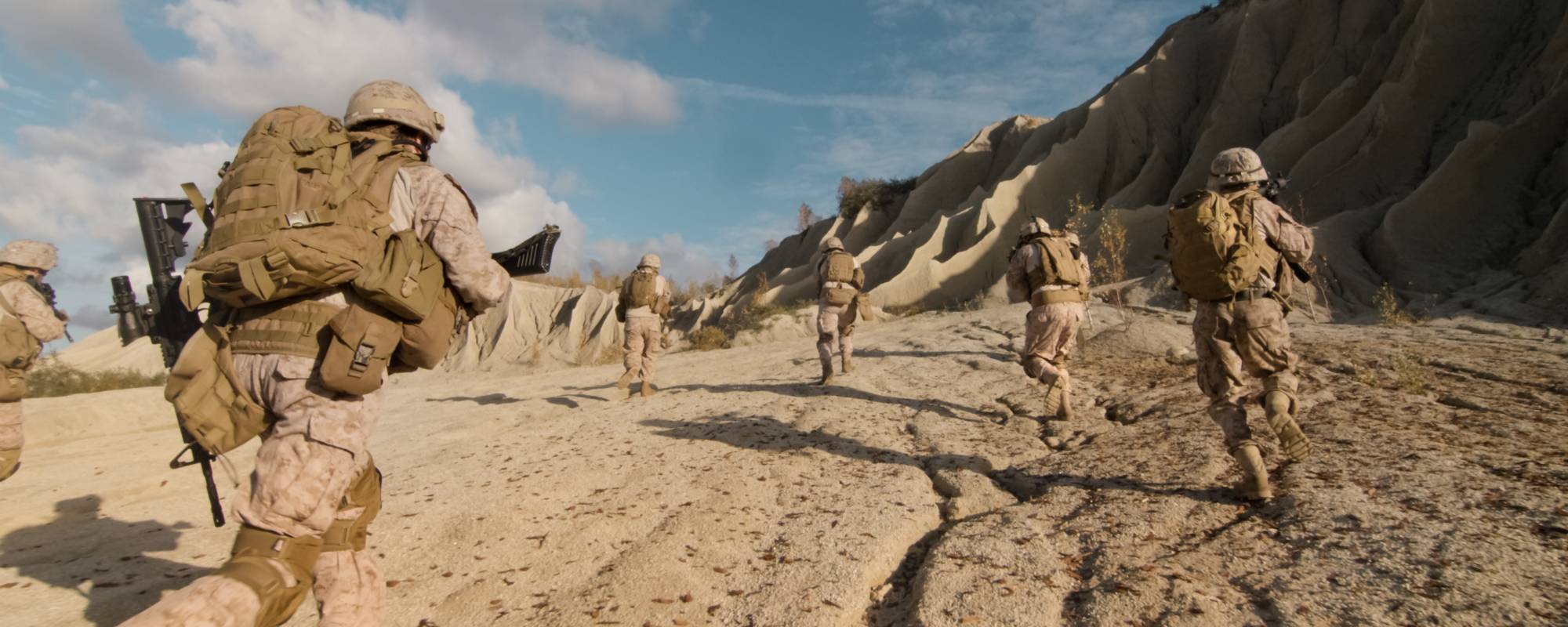
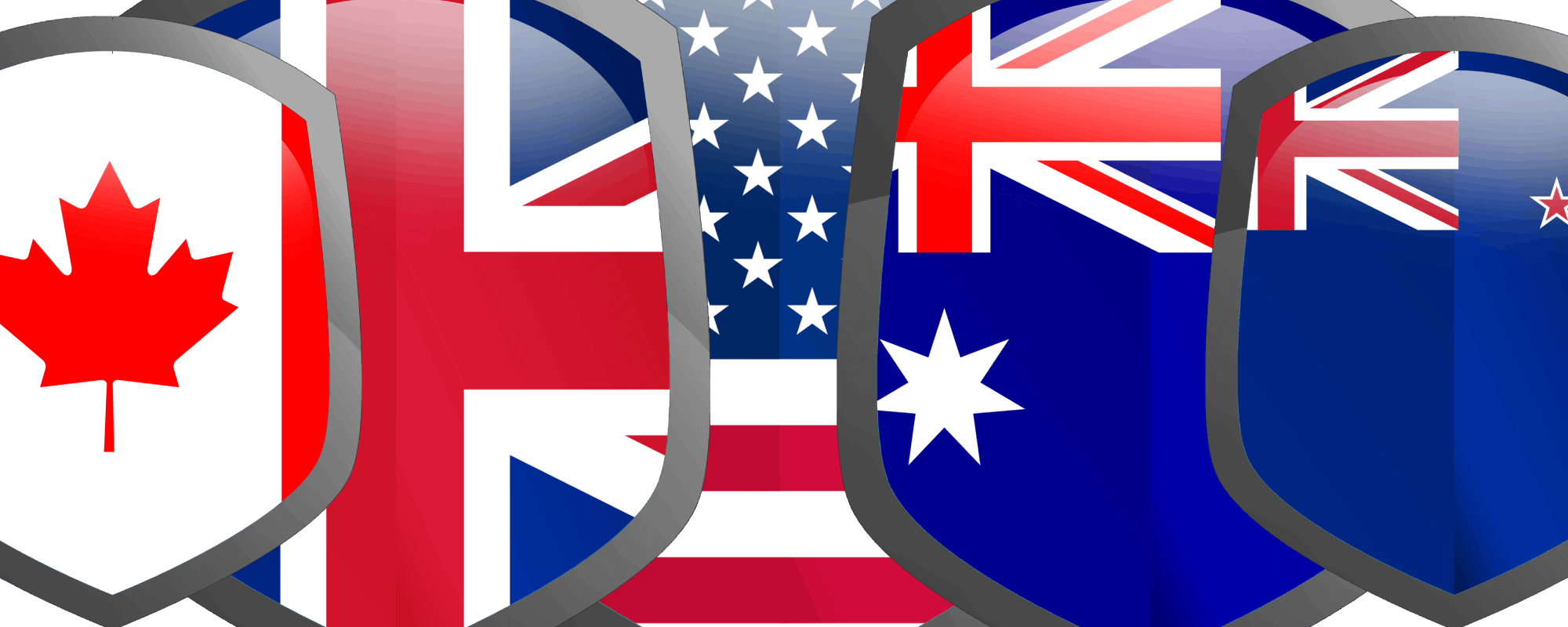


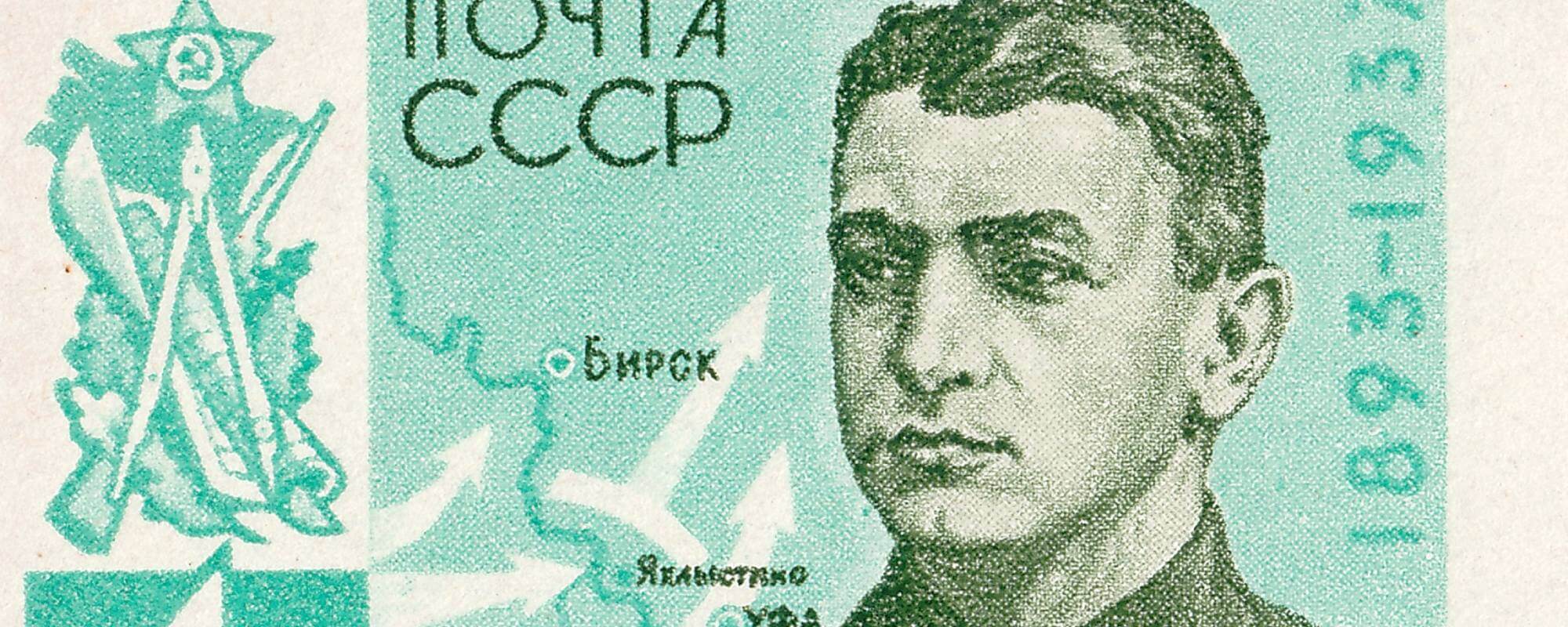
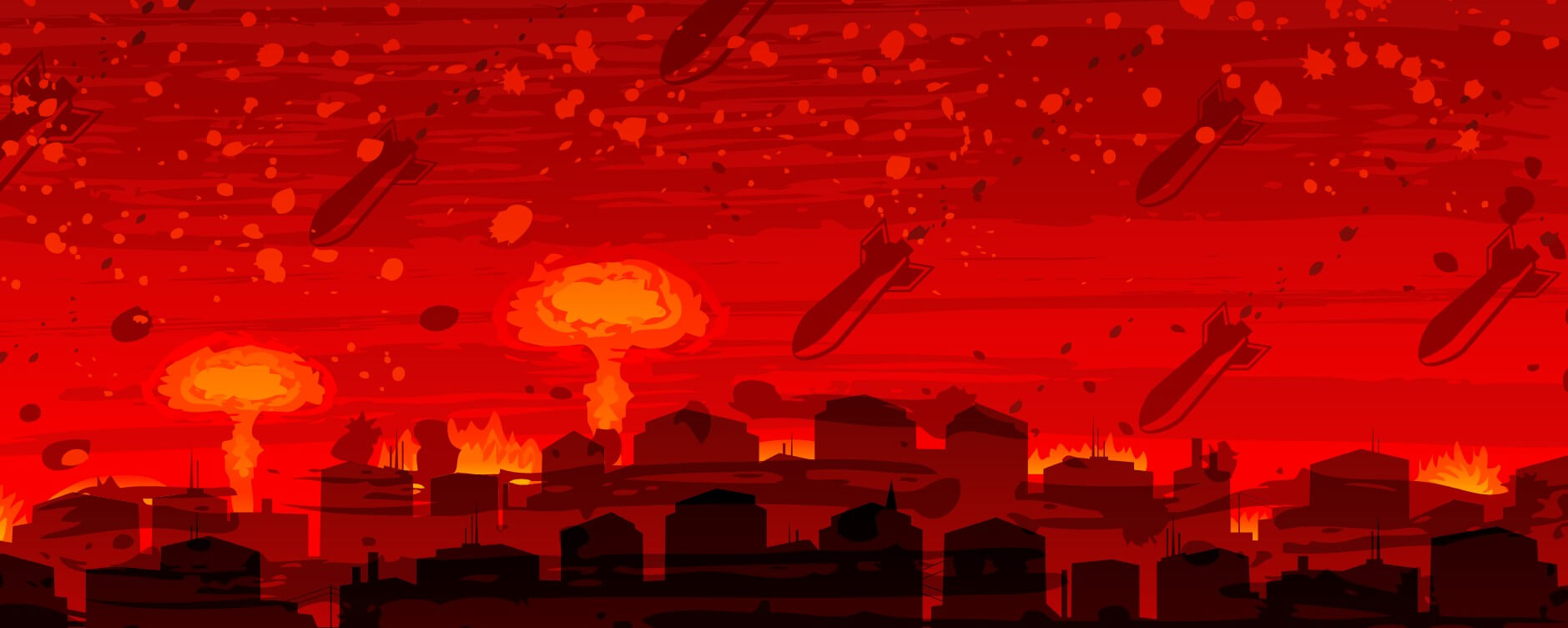
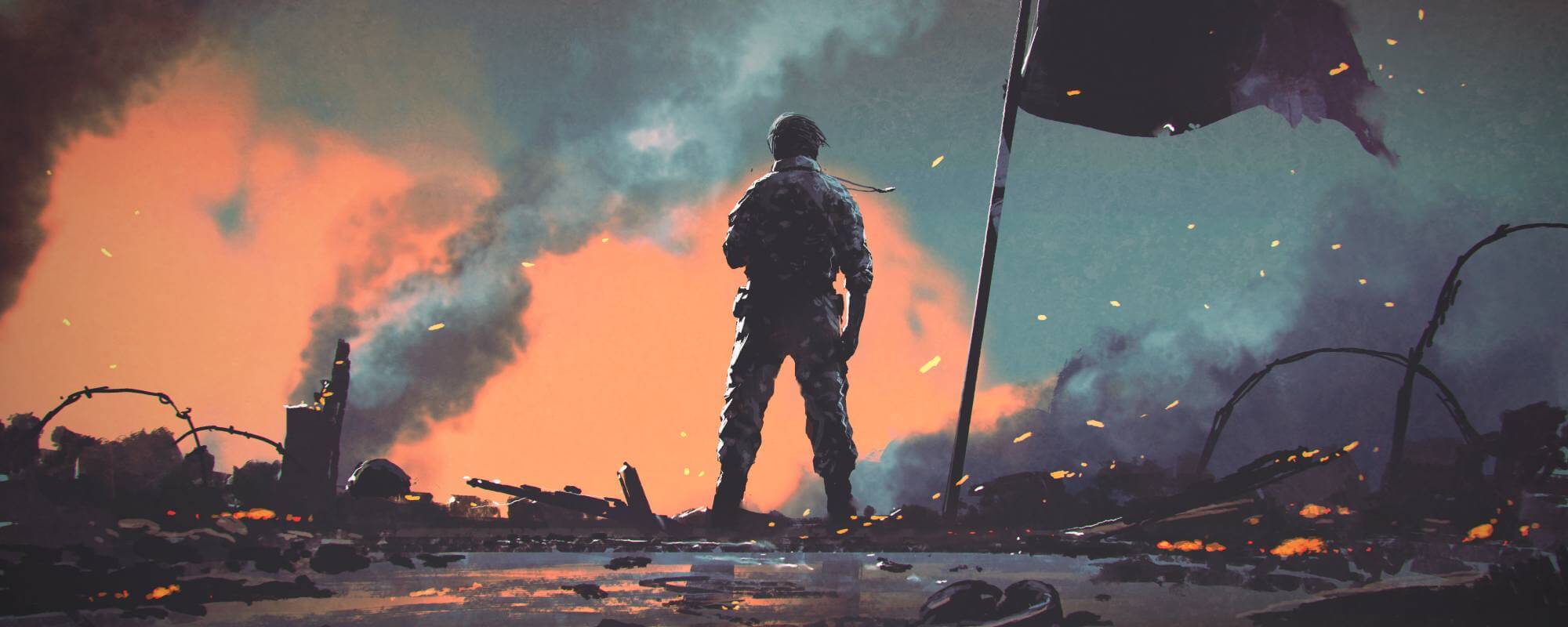
Comments
Start the conversation by sharing your thoughts! Please login to comment. If you don't yet have an account registration is quick and easy.